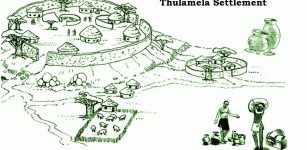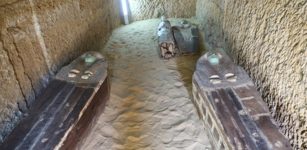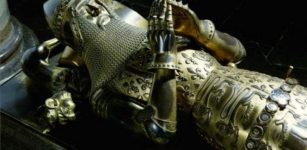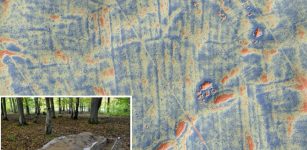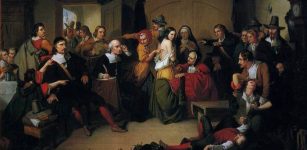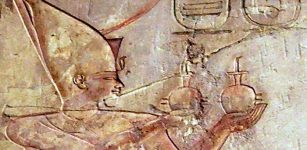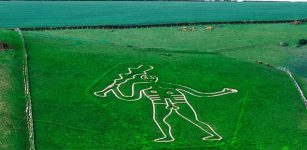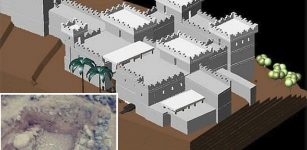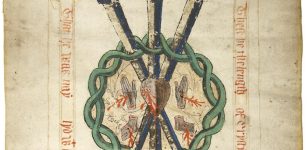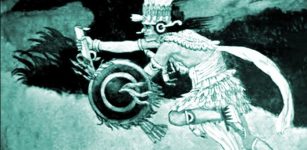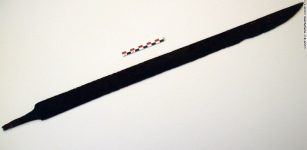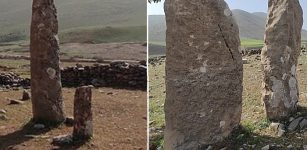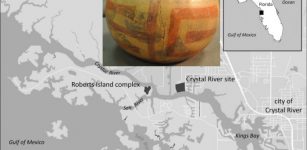The Main Gate Of Historical 9th-Century Old Harran Palace Unearthed
Conny Waters - AncientPages.com - Archaeologists have unearthed the main gate of the historical Harran Palace, in southeastern Turkey’s Şanlıurfa province Harran region. The city of Harran was an important Mesopotamian trade center as early as 2300 BC, located along trade routes to cities such as Nineveh, Iskenderun, and Antioch.
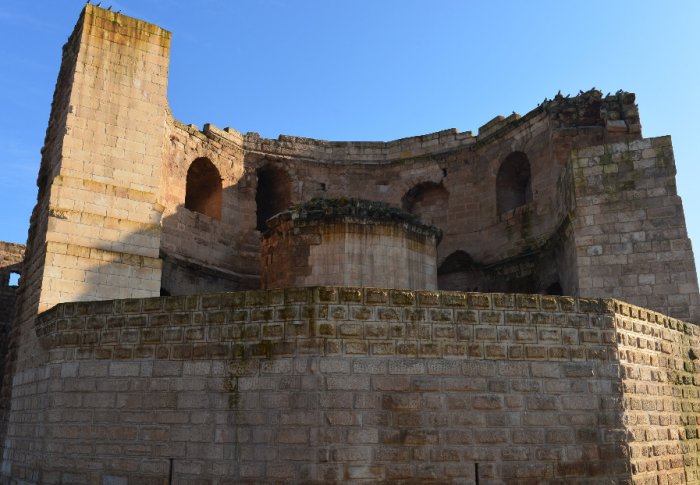 A general view from Harran Palace, Şanlıurfa, southeastern Turkey, Oct. 19, 2020. Image credit: AA
A general view from Harran Palace, Şanlıurfa, southeastern Turkey, Oct. 19, 2020. Image credit: AA
During the first half of the 6th century, BC the city was ruled by Babylonian King Nebuchadnezzar and was inhabited by the worshipers of the moon god, Sin. Constantly inhabited from 6,000 BC to the present day, Harran also served as the capital of the Assyrians and Umayyads. The city is mentioned in the Holy Bible, and it hosted the early civilizations.
However, today, Harran is known for its very unique "beehive" dwellings with cone-shaped roofs on square bases made of clay without wood. These 4-5 m high houses have had the same basic style for almost 3000 years.
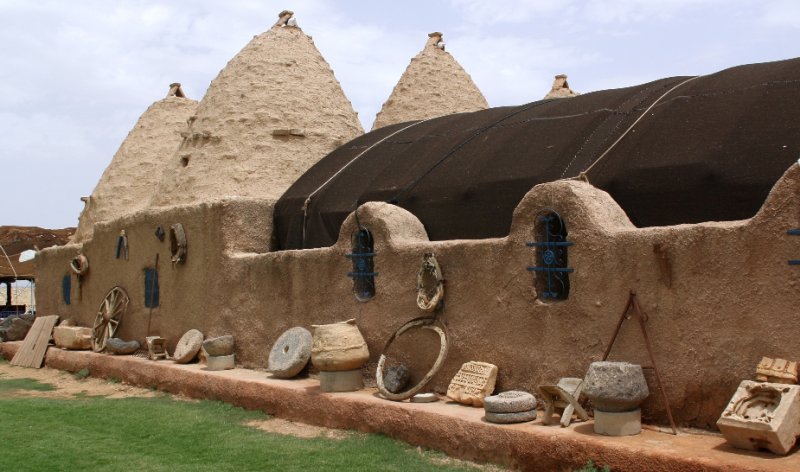 Beautifully reconstructed beehive houses of Harran that were transformed into a small museum and tea house. Image source
Beautifully reconstructed beehive houses of Harran that were transformed into a small museum and tea house. Image source
"The excavation team worked hard for two years to reveal the main gate of the historical palace," Mehmet Onal, the head of the Archeology Department at Harran University, who led the team, told Anadolu Agency.
"We completely unearthed one of the two known gates of the historical Harran Palace. The gate, about 7 meters [around 23 feet] high, is made of basalt stones. Star motifs were also unearthed in our excavations near the ground."
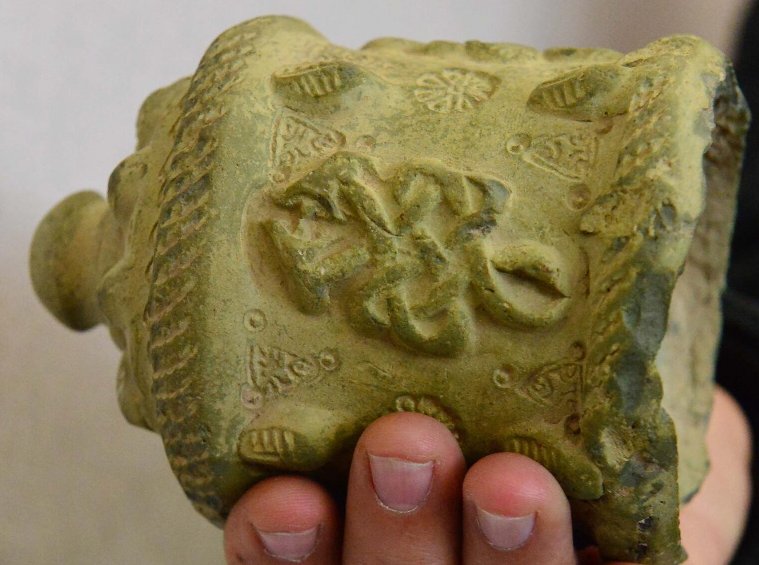 The 900-year-old medicine bottle decorated with the image of two snakes twined, the symbol of today’s medicine, on it, is dated back to the Zengids, a Turkic dynasty that ruled the Levant and Upper Mesopotamia on behalf of the Seljuks, was discovered during earlier excavations (2019) carried out in the ancient city of Harran, Turkey. Image credit: AA
The 900-year-old medicine bottle decorated with the image of two snakes twined, the symbol of today’s medicine, on it, is dated back to the Zengids, a Turkic dynasty that ruled the Levant and Upper Mesopotamia on behalf of the Seljuks, was discovered during earlier excavations (2019) carried out in the ancient city of Harran, Turkey. Image credit: AA
Additionally, the archaeologists also unearthed other inscriptions written in Arabic on a basalt stone, that will contribute to the exact dating of the historic construction. Also, the inscriptions and symbols on the stamp seals, rings, and arrowheads found in the excavations in the palace were also being analyzed by archaeologists.
Önal said that a three-domed bathhouse in the Harran Palace has been discovered during the previous excavations, and the structure contains the bath with cooling, warming, and heating rooms dated to the 12th/13th century, and belonged to the Zengid dynasty and the Ayyubids period.
The Harran Palace is one of the rare examples of palaces that have survived since the Middle Ages in the Middle Eastern countries, adding that the palace dating back 900 years has hundreds of rooms.
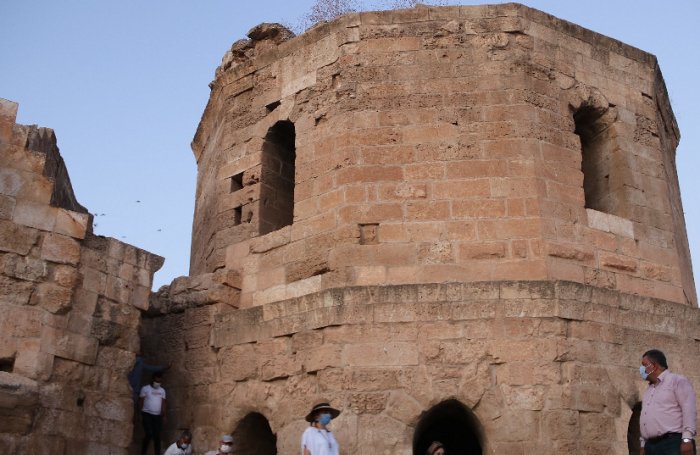 Image credit: Anadolu Agency
Image credit: Anadolu Agency
The first excavations in Harran began in 1950 and if the excavations continue throughout the year, more historical artifacts will be revealed, said Önal, adding that the team 'completely unearthed one of the two known gates of the historical palace. The gate, about 7 meters (23 feet) high, is made of basalt stones.
Hurriyet Daily News wrote that during the 2019 season of excavations also led by Mehmet Önal, archaeologists uncovered 'the place of a huge boiler in the bath. There is a metal boiler on top of the two-meter-high boiler. Cold and warm water pipes, which were connected to the metal boiler in the past, are still intact but the huge metal boiler was plundered during the Mongolian invasions.
The pipes of the cold and warm water are clearly seen in the bath. During this year’s works, we succeeded to reveal even the finest details of the palace bath. It is very important that the bath was unearthed with its intact vault.'
As reported in 2019, the team worked on the second floor of the Harran palace, where they found basaltic dog reliefs in the eastern gate of the palace, lion heads on the right and left of the main entrance, brick vaults, the intact towers, and the palace bath still recognizable in the ruins.
Written by Conny Waters - AncientPages.com Staff Writer

